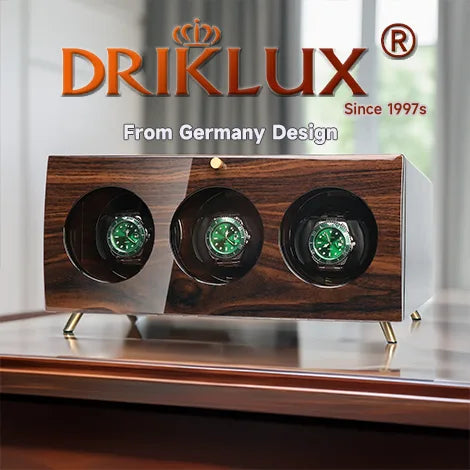The Best TPD and Winding Direction for HAMILTON Watches
HAMILTON watches are known for their American spirit and Swiss precision, offering a blend of heritage and innovation. Understanding the TPD (Turns Per Day) and winding direction is crucial for maintaining these automatic timepieces. Here's a comprehensive guide for various HAMILTON models:
| Series | Model | TPD | Direction |
|---|---|---|---|
| Khaki Field | All Automatic Models | 650-800 | Bidirectional |
| Jazzmaster | Automatic Models | 650-800 | Bidirectional |
| American Classic | Automatic Models | 650-800 | Bidirectional |
| Khaki Navy | All Automatic Models | 650-800 | Bidirectional |
| Ventura | Automatic Models | 650-800 | Bidirectional |
| Broadway | Automatic Models | 650-800 | Bidirectional |
Most modern HAMILTON automatic watches have a standard TPD range of 650-800 and use bidirectional winding. This is due to HAMILTON's use of reliable Swiss automatic movements, often based on ETA calibers.
When using a watch winder for your HAMILTON, it's generally recommended to start with 650 TPD and adjust up to 800 TPD if needed, always with bidirectional rotation to maintain optimal performance. The bidirectional setting allows the watch to wind in both clockwise and counterclockwise directions, mimicking the natural movement of the wrist.
Experimenting with TPD Settings
If you're unsure about the specific TPD setting for your HAMILTON watch or want to fine-tune its performance, you can experiment with different settings. Here's a step-by-step guide to help you find the optimal TPD for your HAMILTON:
- Start by manually winding your watch. Turn the crown 20 to 30 times to ensure it's fully wound.
- Place your watch in the winder and set it to the lowest TPD setting (650 for HAMILTON watches) with bidirectional rotation.
- Run the winder for 48 hours, periodically checking if the watch is keeping accurate time.
- If the watch is still keeping accurate time after two days, you've found the right setting.
- If the watch is losing time, increase the TPD setting slightly (e.g., to 750) and repeat the 48-hour test.
- Continue adjusting and testing until you find the lowest TPD setting that keeps your watch running accurately, not exceeding 800 TPD.
Remember that HAMILTON watches typically have a power reserve of about 38-80 hours, depending on the movement used. If your watch is still running accurately after 48 hours on the winder, it indicates that the winder is providing sufficient turns to keep the mainspring wound.
Additional Considerations
While experimenting with TPD settings can help you find the optimal winding for your HAMILTON, keep these points in mind:
- Over-winding is generally not a concern with modern HAMILTON watches, as they have built-in mechanisms to prevent damage from excessive winding.
- If you wear your watch regularly, you may not need to keep it on a winder constantly. Winders are most useful for watches that aren't worn daily.
- The natural movement of your wrist while wearing the watch is still the best method for keeping it wound and running accurately.
- HAMILTON uses various movements in their watches, including ETA 2824-2, H-10, H-31, and others. While the general TPD range is similar, there might be slight variations based on the specific movement in your watch.
- Some HAMILTON models, like those with the H-10 movement, have extended power reserves (up to 80 hours) and may require less frequent winding.
For more detailed information on watch winder settings and recommendations, you can refer to our comprehensive guide: Watch Winder Settings Guide: Recommended Turns Per Day (TPD).
Remember, while using a watch winder can be convenient, it's also beneficial to wear your HAMILTON regularly. The natural movement of your wrist provides the best winding for your timepiece and allows you to enjoy its Swiss precision and American spirit fully.
Always consult your watch's specific manual or contact HAMILTON customer service for the best care instructions for your particular model, especially if you have a limited edition or a watch with special features.
HOW OUR CUSTOMERS ARE TREATED:
Loyal customers not only come back, they don't just recommend you, they insist that their friends buy from you.. Profit in business comes from repeat customers; customers that boast about your product and outstanding service
















